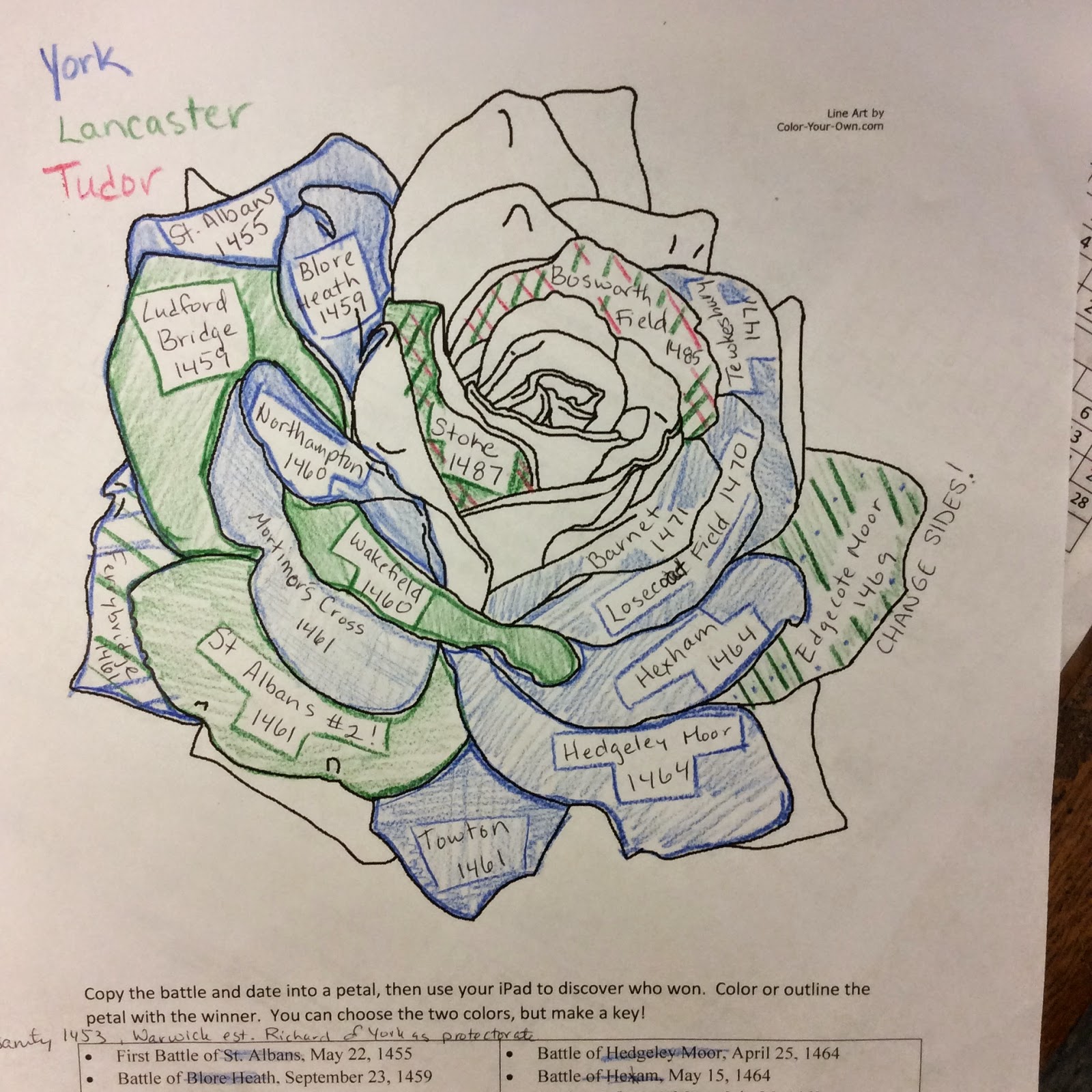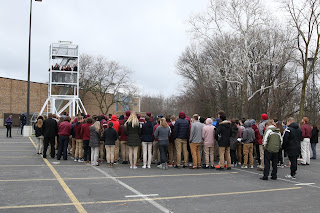Day 104: War of the Roses and Incorrect Textbooks
I'm really enjoying my history class this week. Because my AP kids are still working their way through research (I'll brag on them soon too) I have three extra periods in the computer lab that give me time to do some reading when I'm not assisting students. Yesterday and today I've been reading up on the War of Roses. My history book basically skips this period. Here's is our textbook on the subject:
First, the War of the Roses ended with Henry VII being crowned, beginning the Tudor Dynasty, and it can probably be argued that Henry VIII and Elizabeth I had a bit of impact on British history. Kind of an important result to leave out.
Two, and more grievous, Edward III had nothing to do with the War of Roses. He reigned from 1327-1377; the War of the Roses began when Richard of York revolted against Edward VI in 1455...Edward III's great-great-grandson.
Three, I suppose Edward III asking Parliament for money set the stage for less power from the king, but "sowing the seed of democracy" seems a bit strong.
Four, this war is epic. Like, it reads like Game of Thrones. Actually, I suspect GoT was based on this war. Why would a high school history book leave something like that out?
But really, the fact that the history textbook got the war just totally wrong is irksome, and is why I do not use the history book.
Tomorrow we will use colored yarn to display allegiances and wear pictures and act out this crazy war in the hallway. I'll take pictures and give you the war's run-down tomorrow. But for now I will curb my history high, and give you today's activity:
They copied the names and years of battles into the petals, then used iPads to research who won, and colored the petals in to match the victor. Arts and crafts, technology, and critical thinking...because at some point Henry Tudor joined the Lancaster side, so they needed more than two colors...mwahaha.
P.S. It was called the War of the Roses because the symbol of the house of York was a white rose. The symbol of the Lancasters has become known as the red rose, but that's more a result of Shakespeare's Henry V than true historical knowledge...instead, the red rose of Lancaster was more likely adopted after the Battle of Bosworth (the end of the War of Roses) and adapted into the Tudor Rose, which combined the red rose of Lancaster and the white rose of York. (Source)
"Following the Hundred Years' War, the English suffered a period of internal turmoil known as the War of the Roses, in which two noble houses fought for the throne. Nevertheless, this war was responsible for strengthening the English Parliament. Edward III's constant need for money to finance the war led him to call Parliament as many as 27 times, asking for new taxes. Gradually Parliament's "power of the purse" became firmly established, sowing the seed of democracy." - pg 361 of McDougal Littell's World History Patterns of Interaction (2003)I have a couple of issues with this paragraph.
First, the War of the Roses ended with Henry VII being crowned, beginning the Tudor Dynasty, and it can probably be argued that Henry VIII and Elizabeth I had a bit of impact on British history. Kind of an important result to leave out.
Two, and more grievous, Edward III had nothing to do with the War of Roses. He reigned from 1327-1377; the War of the Roses began when Richard of York revolted against Edward VI in 1455...Edward III's great-great-grandson.
Three, I suppose Edward III asking Parliament for money set the stage for less power from the king, but "sowing the seed of democracy" seems a bit strong.
Four, this war is epic. Like, it reads like Game of Thrones. Actually, I suspect GoT was based on this war. Why would a high school history book leave something like that out?
But really, the fact that the history textbook got the war just totally wrong is irksome, and is why I do not use the history book.
Tomorrow we will use colored yarn to display allegiances and wear pictures and act out this crazy war in the hallway. I'll take pictures and give you the war's run-down tomorrow. But for now I will curb my history high, and give you today's activity:
They copied the names and years of battles into the petals, then used iPads to research who won, and colored the petals in to match the victor. Arts and crafts, technology, and critical thinking...because at some point Henry Tudor joined the Lancaster side, so they needed more than two colors...mwahaha.
P.S. It was called the War of the Roses because the symbol of the house of York was a white rose. The symbol of the Lancasters has become known as the red rose, but that's more a result of Shakespeare's Henry V than true historical knowledge...instead, the red rose of Lancaster was more likely adopted after the Battle of Bosworth (the end of the War of Roses) and adapted into the Tudor Rose, which combined the red rose of Lancaster and the white rose of York. (Source)
| Source |


Comments
Post a Comment